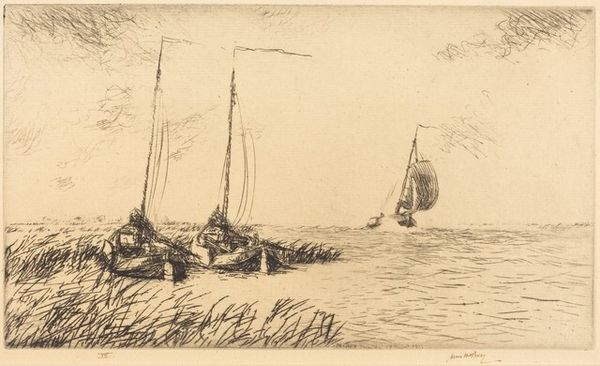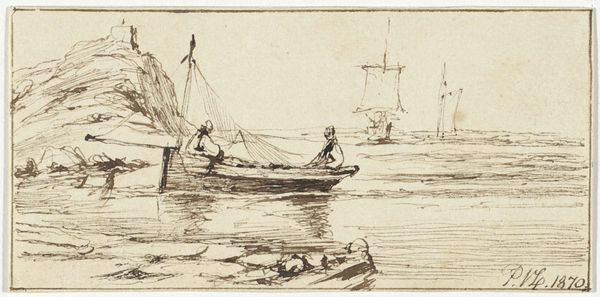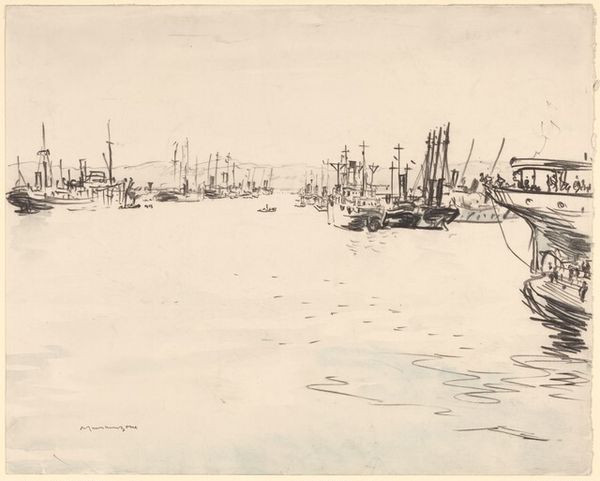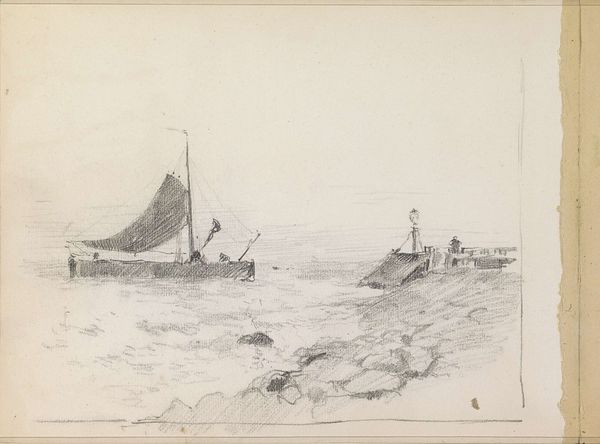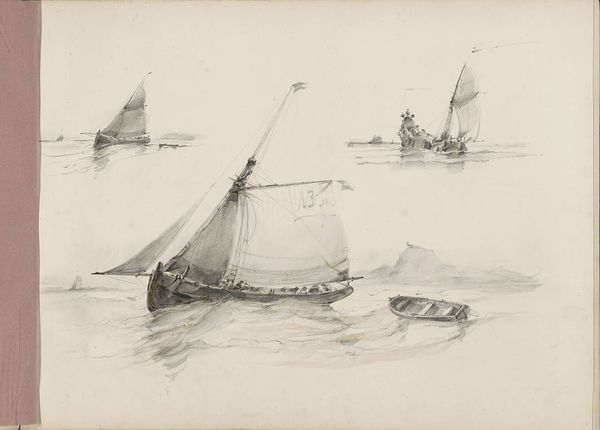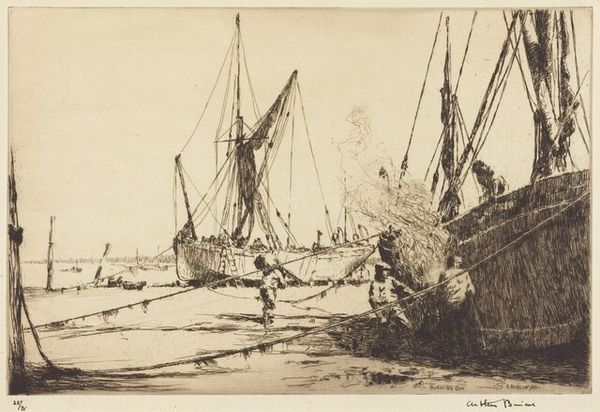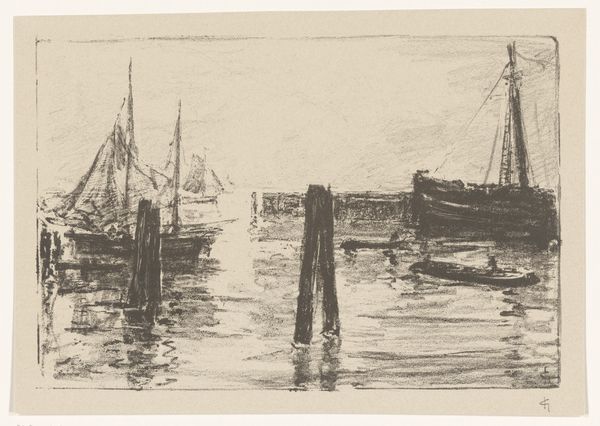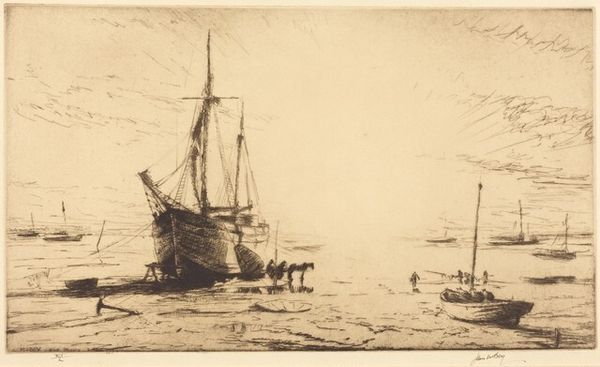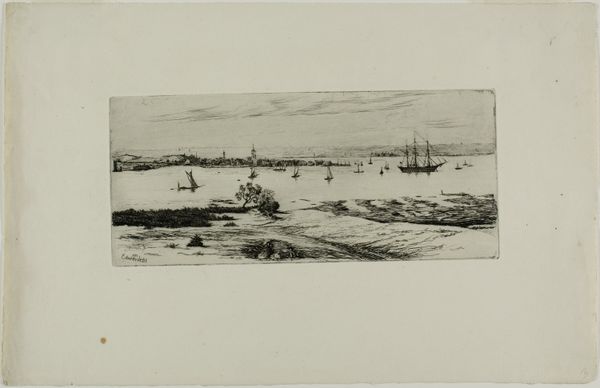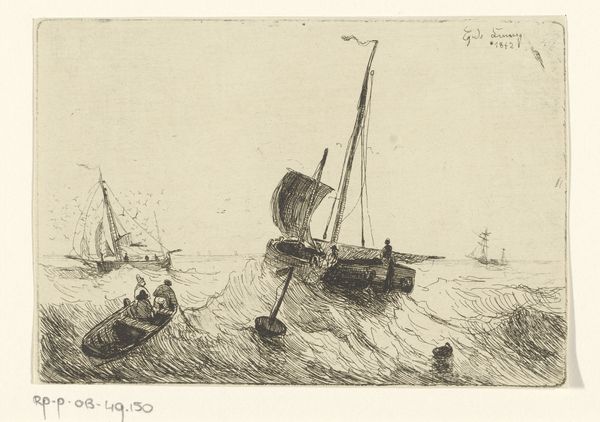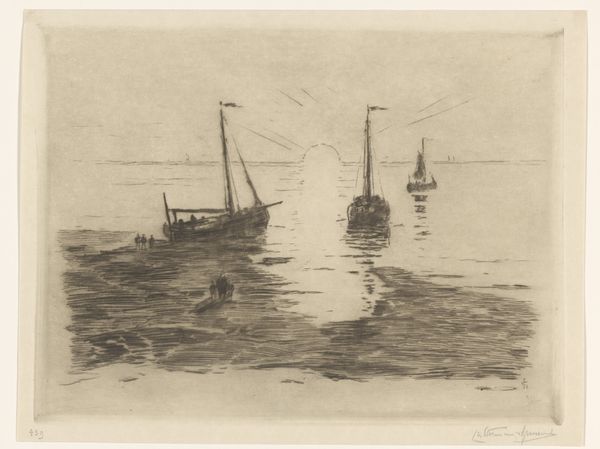
drawing, paper, ink
#
drawing
#
ink drawing
#
landscape
#
paper
#
ink
#
genre-painting
#
realism
Dimensions: height 103 mm, width 189 mm
Copyright: Rijks Museum: Open Domain
Curator: "Schepen op zee bij stormachtig weer," or "Ships at Sea in Stormy Weather," an ink drawing by Louis Meijer, created in 1849. Editor: Brrr, you can almost feel the spray. It's all grays and frantic lines, giving a real sense of struggle against the elements. The artist really captures that tumultuous mood with such limited materials. Curator: Indeed. Meijer was working at a time when maritime painting was incredibly popular, reflecting the Netherlands' continued reliance on and connection to the sea for trade and power. How do you read that interplay here? Editor: The choice of ink is interesting – economical, certainly, and readily available. I wonder if the monochrome palette also speaks to the hardships faced by sailors, reducing their world to basic elements: water, wind, and the sheer necessity of work. There's little romance here. Curator: The drawing comes relatively early in Meijer's career, predating his turn to more colorful and conventionally "picturesque" maritime scenes that brought him greater acclaim. Is this an exercise in realism, then, before embracing popular taste? Editor: It's a realism rooted in the practical. Think about the labor involved in seafaring – the constant repairs, the understanding of currents and weather. That's all here in the urgency of the lines. Even the swiftly sketched steamship is part of the working environment of the mid-19th century, reflecting changing technology. Curator: I see your point about this reflecting the shift toward the integration of steam power within seafaring practices. This move towards mechanization reshaped naval and trade activities, impacting the lives of those connected to it socially and economically. Editor: Yes, the way Meijer uses such a basic material like ink makes you really consider how everyday materials represent the everyday life. How it makes you ask, “Who had access to these artworks?” and "what was the artist aiming to do?” Curator: It does provoke questions around patronage and access. I now better appreciate how this simple drawing captures a crucial transition within maritime culture and its public perception. Editor: Absolutely. It gives me a sharper focus on both the immediate and larger worlds involved in producing and experiencing this scene.
Comments
No comments
Be the first to comment and join the conversation on the ultimate creative platform.
